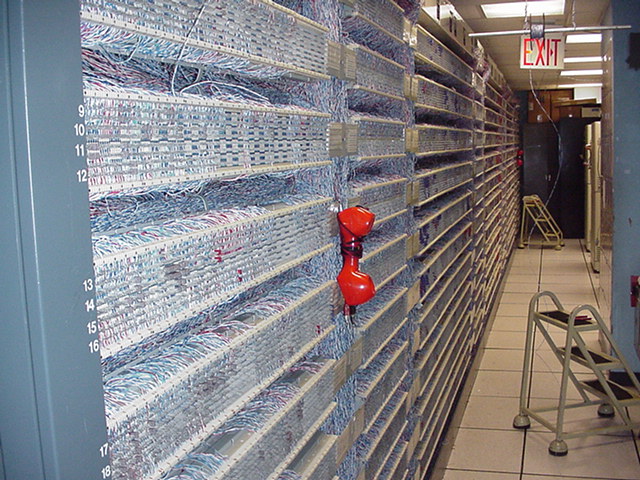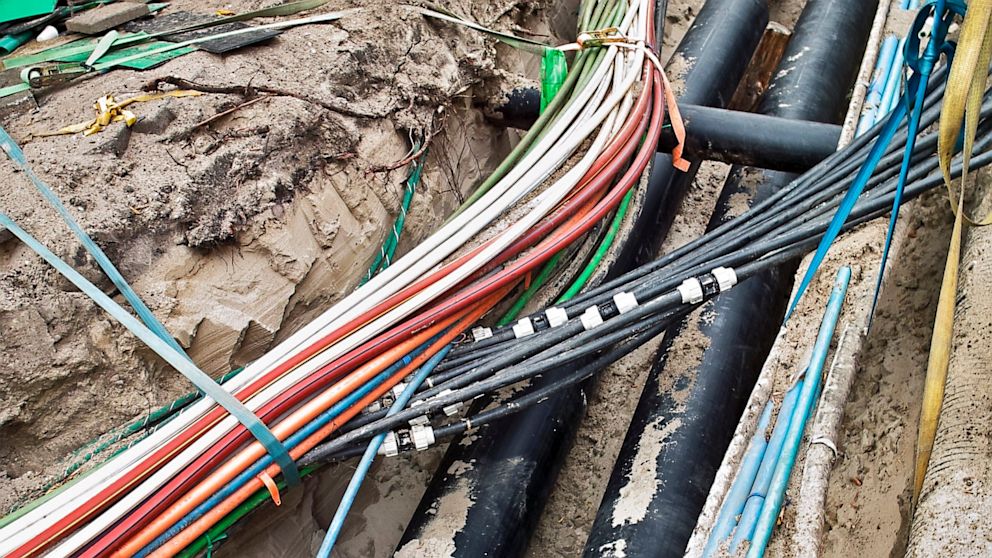 |
| connectivity of telephone network architecture |
MAIN DISTRIBUTION FRAME (MDF)
- main cross connection point between the Outside Plant (OSP) cable pairs and the exchange.
- it provides a great flexibility for line testing functions as well as electrical protection. Used for line terminations.
MAN HOLE
- a jointing chamber / breakout point of cables which one man can get down to the man hole and can do the repairs.
- called feeder cables (large bundles) of twisted pair cable (from 50- 3000 pairs) are then taken to the underground and then trough manholes to a cabinet,where they are terminated again.
CABINET
- termination between the underground cables are coming from the MDF and distribution point (DP) side.
- consists of two sides called primary and secondary.
- primary side from MDF
secondary side from DP
DISTRIBUTION POINT (DP)
- termination point between cabinet and the subcriber.
- each DP contains 10 subcribers
- drop wire is connected to the subcriber premises through the discharger unit.
-purpose of discharger unit is to protect the telephone set of the subcriber from lightning damages. This uses the fuses and arrestors.
OVERHEAD WIRE
- suspended above the ground using poles.
- wire extended from underground cable and suspended above the ground and connected to the distribution point.
DROP WIRE
- an aboveground or underground line or wire which connects the terminal of a distribution cable to a subcriber's premises.
- consits of a telephone wire ( 1 pair of copper wire).
UNDERGROUND CABLE
- consists one or more conductors covered with suitable insulation and surrounded by a protecting cover.
- the conducter used in cable should be tinned stranded copper or aluminium of high conductuvity.
- the cable must have the proper thickness.


























